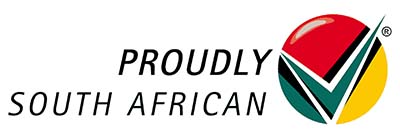In today’s rapidly changing financial landscape, having a solid strategy for managing your assets is crucial for achieving your financial goals and securing your future.
In this blog post, we’ll walk you through the process of crafting a personalized asset management plan that suits your needs and helps you navigate the complexities of the investment world.
Understanding Asset Management Strategies
Before diving into the nitty-gritty of asset management, let’s first understand what it’s all about.
Asset management involves making decisions about how to allocate your resources (money, time, etc.) to achieve specific goals.
There are various strategies you can employ, ranging from passive to active management and value to growth investing.
Your choice of strategy will depend on factors such as your risk tolerance, investment goals, and time horizon.
Crafting an Asset Management Plan
Asset management strategies are essentially blueprints for organizations to get the most out of their assets, which can be anything from physical equipment to intangible property like intellectual property.
An effective strategy can boost your company’s bottom line by increasing productivity, reducing downtime, and saving on costs.
Here’s a breakdown of what goes into an asset management strategy:
1. Taking Stock:
The first step is understanding what assets you have and their current condition. This involves creating an inventory and categorizing assets based on importance and function.
2. Setting Goals:
What do you want to achieve with your assets? Common goals include maximizing their lifespan, optimizing performance, and minimizing downtime.
3. Building a Plan:
This is where you outline how you’ll achieve your goals.
This might involve creating preventive maintenance schedules, implementing asset tracking systems, or using data analytics to predict equipment failures.
4. Prioritization:
Not all assets are created equal. Some are critical to your operations, while others may play a lesser role.
Your strategy should prioritize the critical assets to ensure their continued operation.
5. Continuous Improvement:
Regularly assess how well your strategy is working and make adjustments as needed. New technologies and data can help you refine your approach over time.
Implementing an Asset Management Plan
An asset management plan is your roadmap to optimizing your assets, but how do you translate that plan into action?
Here’s a breakdown of the key steps involved in implementing an asset management plan:
1. Planning the Asset Lifecycle:
- Assessment: This involves reviewing your current assets and their ability to meet your needs. Analyze their condition, remaining useful life, and how well they align with your organizational goals.
- Define Management Procedures: Establish clear protocols for handling your assets throughout their lifecycle. This includes acquisition, operation, maintenance, disposal, and everything in between.
2. Operation and Maintenance:
- Focus on preventative maintenance: Schedule regular maintenance tasks to proactively address potential issues and prevent breakdowns.
- Develop maintenance procedures: Outline specific procedures for maintaining different asset types. Consider using checklists and standardized protocols to ensure consistency.
- Monitor and optimize: Continuously track asset performance and maintenance costs. Use this data to identify areas for improvement and refine your maintenance strategy.
3. Implementation and Resource Allocation:
- Develop an action plan: Break down your overall strategy into specific tasks with clear timelines and assigned responsibilities.
- Resource allocation: Allocate the necessary budget, personnel, and tools to execute the plan effectively.
- Communication and training: Ensure clear communication across your organization regarding the asset management plan and procedures. Train personnel on their roles and responsibilities.
4. Continuous Improvement:
- Performance measurement: Regularly track key performance indicators (KPIs) to assess the effectiveness of your plan. Examples of KPIs could be maintenance costs, equipment uptime, or return on investment (ROI).
- Review and adapt: Schedule periodic reviews of your plan to assess its effectiveness. Be prepared to adapt your strategies based on new information, changing needs, or technological advancements.
Conclusion
Developing an effective asset management plan is essential for achieving your financial goals and securing your future.
By understanding your objectives, crafting a strategic plan, and staying agile in your approach, you can navigate the ever-changing investment landscape with confidence.
Whether you’re investing in South Africa or elsewhere, the principles of asset management remain the same.
So why wait? Start building your plan today and take control of your financial future!








